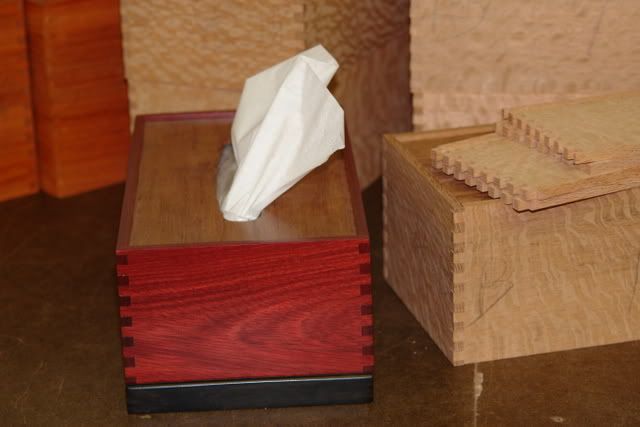HI all,
There are six different types of dovetail jigs sold by a couple of dozen different manufacturers. They basically are fixed template router above the template, fixed template router below the template, variable space router above the template, router fixed with a moving fence and router moves with a fixed fence. Some use guide bushings while others use bearing guided bits. The more flexiblity and options are presented the longer the set up time usually. The narrower the dovetail angle (ie 7 degrees instead of 15 degrees) the thicker the range of stock can be used with a given set up but the more critical the fit becomes. Some require only two stock set ups per drawer while others take four set ups. Virtually every jig ever manufactured is capable of cutting great, tight fitting dovetails if you are careful enough and take enough care in the set up and adjustments required. So, what your are buying with one over another is how fast and easy is it to set up and actually use day in and day out. The fussier ones gather dust in most shops because it is too much hassle to grab and use. The ones that only need to be adjusted once and cut good, tight dovetails from then on get used the most from my experience. When I teach classes on dovetailing the students usually walk in thinking they want complete adjustment flexibility so want to start with either the Leight or the Jointech/Incra. They usually walk out thinking they want the one they can grab and use well right off the shelf without resorting to rereading the manual every time. In the end most favor the VS-600 or the Gifkin jig. The best one to buy, and by far the most cost effective, is the one you will use day in and day out. They all are expensive sitting on a shelf gathering dust and they are all "cheap" if employed a good part of the time. The 1010 and 1400 Festool routers both work very well with all the moving router, fixed or variable spacing type jigs. Hope this helps.
Jerry




